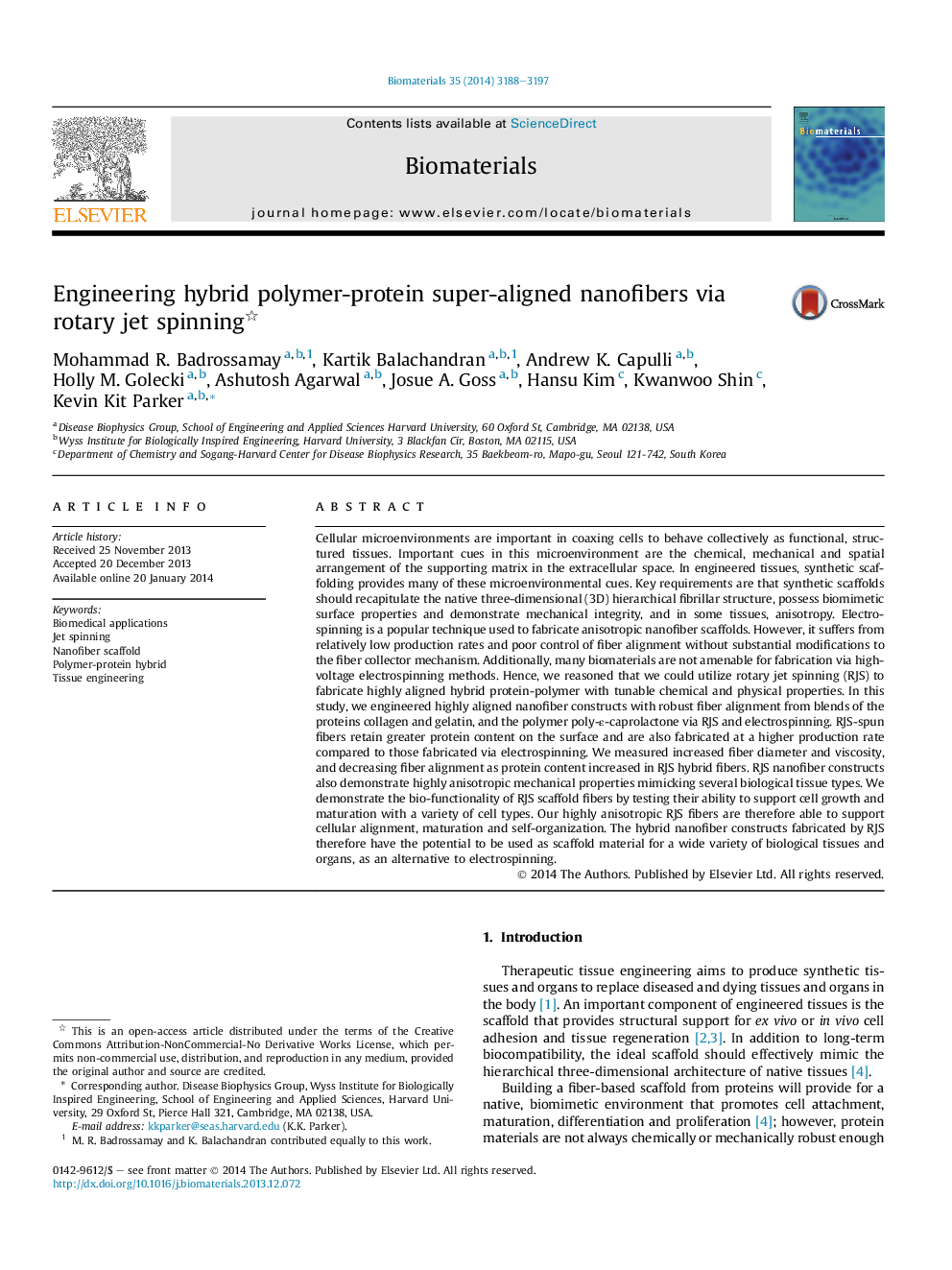| کد مقاله | کد نشریه | سال انتشار | مقاله انگلیسی | نسخه تمام متن |
|---|---|---|---|---|
| 10227919 | 469 | 2014 | 10 صفحه PDF | دانلود رایگان |
عنوان انگلیسی مقاله ISI
Engineering hybrid polymer-protein super-aligned nanofibers via rotary jet spinning
ترجمه فارسی عنوان
مهندسی هیبرید پلیمر-پروتئین نانو فیبر فوق العاده تراز شده از طریق چرخش جت دوار
دانلود مقاله + سفارش ترجمه
دانلود مقاله ISI انگلیسی
رایگان برای ایرانیان
کلمات کلیدی
کاربردهای بیومدیکال، چرخش جت، داربست نانوفیبری، پلیمر-پروتئین ترکیبی، مهندسی بافت،
موضوعات مرتبط
مهندسی و علوم پایه
مهندسی شیمی
بیو مهندسی (مهندسی زیستی)
چکیده انگلیسی
Cellular microenvironments are important in coaxing cells to behave collectively as functional, structured tissues. Important cues in this microenvironment are the chemical, mechanical and spatial arrangement of the supporting matrix in the extracellular space. In engineered tissues, synthetic scaffolding provides many of these microenvironmental cues. Key requirements are that synthetic scaffolds should recapitulate the native three-dimensional (3D) hierarchical fibrillar structure, possess biomimetic surface properties and demonstrate mechanical integrity, and in some tissues, anisotropy. Electrospinning is a popular technique used to fabricate anisotropic nanofiber scaffolds. However, it suffers from relatively low production rates and poor control of fiber alignment without substantial modifications to the fiber collector mechanism. Additionally, many biomaterials are not amenable for fabrication via high-voltage electrospinning methods. Hence, we reasoned that we could utilize rotary jet spinning (RJS) to fabricate highly aligned hybrid protein-polymer with tunable chemical and physical properties. In this study, we engineered highly aligned nanofiber constructs with robust fiber alignment from blends of the proteins collagen and gelatin, and the polymer poly-ε-caprolactone via RJS and electrospinning. RJS-spun fibers retain greater protein content on the surface and are also fabricated at a higher production rate compared to those fabricated via electrospinning. We measured increased fiber diameter and viscosity, and decreasing fiber alignment as protein content increased in RJS hybrid fibers. RJS nanofiber constructs also demonstrate highly anisotropic mechanical properties mimicking several biological tissue types. We demonstrate the bio-functionality of RJS scaffold fibers by testing their ability to support cell growth and maturation with a variety of cell types. Our highly anisotropic RJS fibers are therefore able to support cellular alignment, maturation and self-organization. The hybrid nanofiber constructs fabricated by RJS therefore have the potential to be used as scaffold material for a wide variety of biological tissues and organs, as an alternative to electrospinning.
ناشر
Database: Elsevier - ScienceDirect (ساینس دایرکت)
Journal: Biomaterials - Volume 35, Issue 10, March 2014, Pages 3188-3197
Journal: Biomaterials - Volume 35, Issue 10, March 2014, Pages 3188-3197
نویسندگان
Mohammad R. Badrossamay, Kartik Balachandran, Andrew K. Capulli, Holly M. Golecki, Ashutosh Agarwal, Josue A. Goss, Hansu Kim, Kwanwoo Shin, Kevin Kit Parker,
